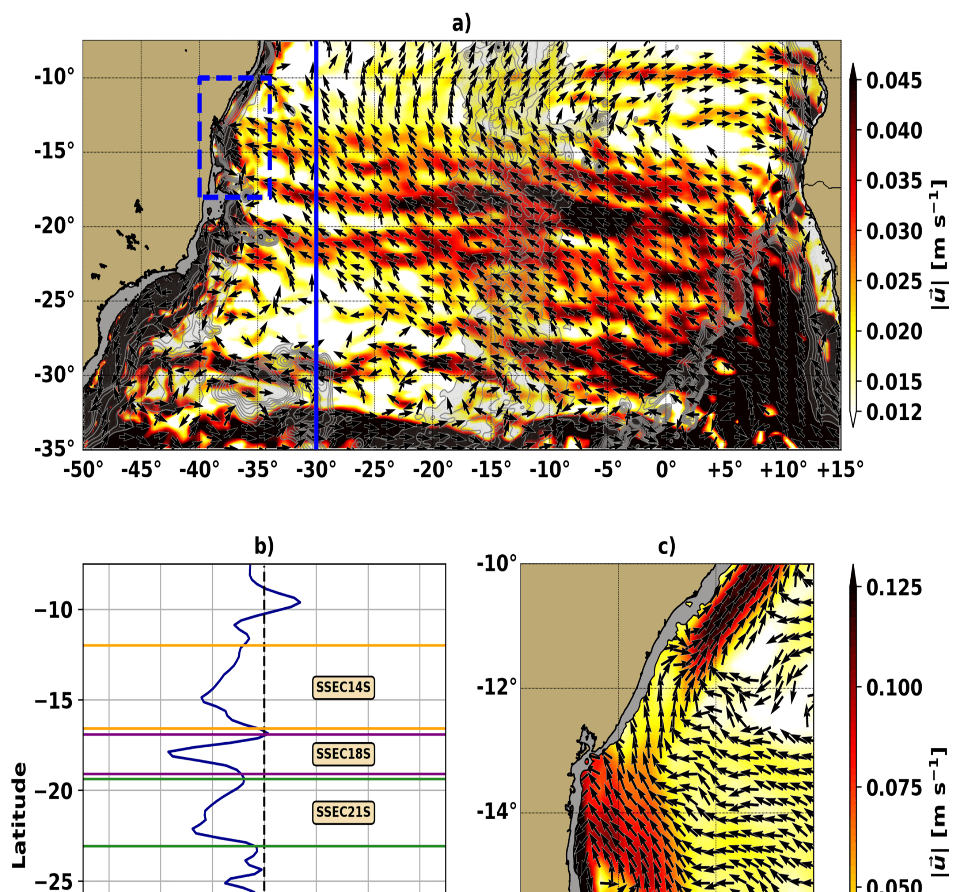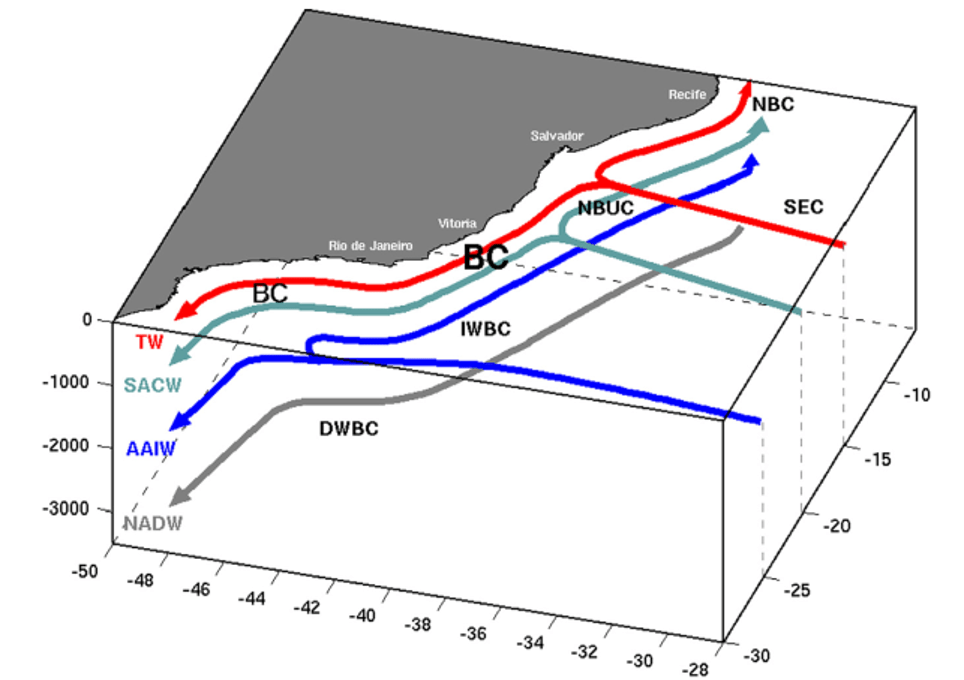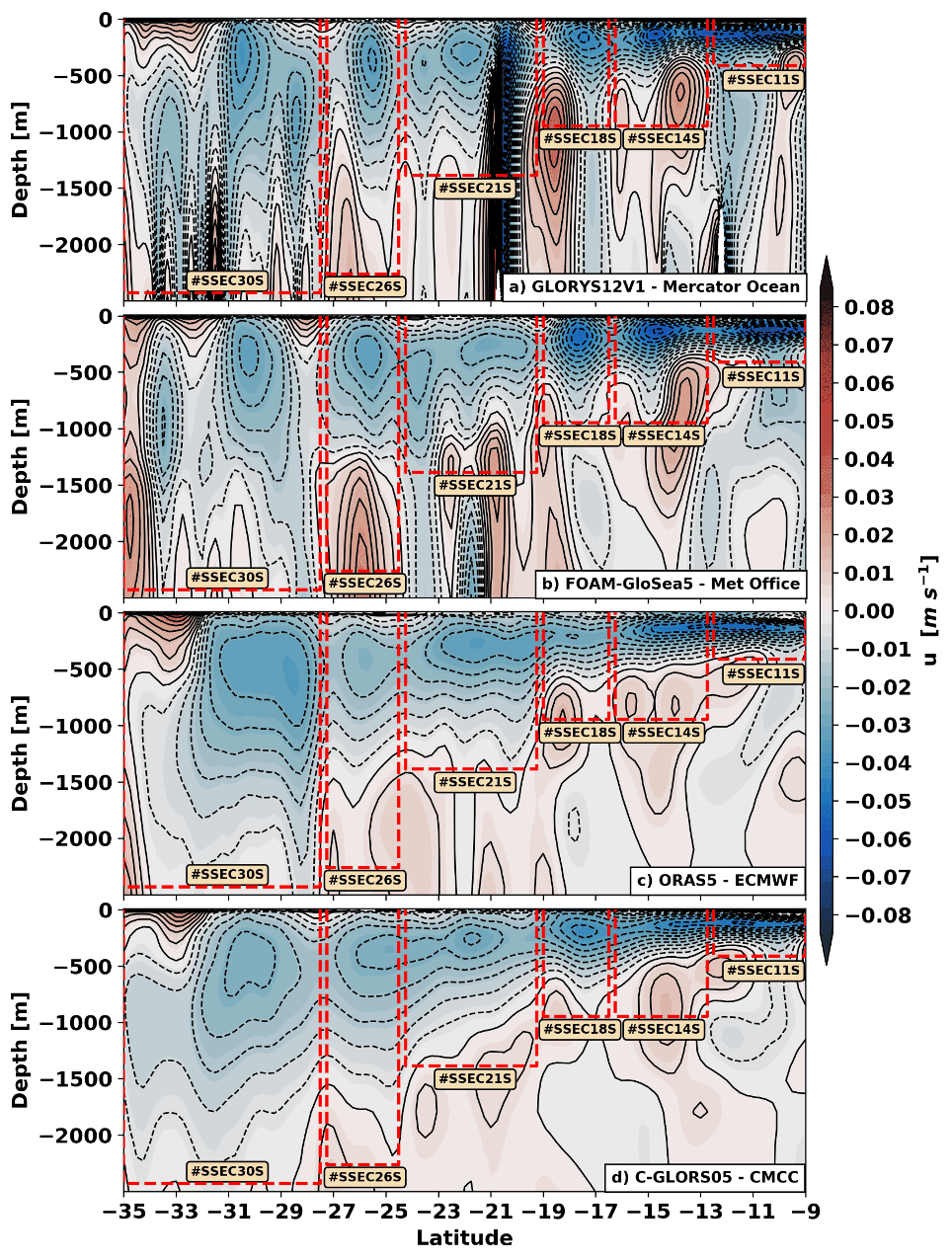A paper published on June 17, 2021 by Caique Luko, an oceanographer at the University of São Paulo, Brazil and colleagues including Iury Simoes-Sousa, PhD Candidate at UMass Dartmouth and Prof Tandon (Caique’s co-advisor in his Master’s thesis) in JGR-Oceans reveal that the southern branch of the South Equatorial Current is a multi-banded flow with surface signatures arising from different subsurface cores (Figure 1).

Figure 1: (a) Horizontal distribution of the geostrophic velocities mean field derived from altimetry data. Gray shaded area masks regions shallower than 100 m, and background gray shading highlights regions shallower than 4,000 m. (b) Meridional section of the zonal velocities at 30°W (blue line in panel a). (c) Horizontal distribution of the geostrophic velocities mean field zoomed in to the region of the Brazil Current origin site (blue dashed box in panel a)
“The SSEC is an ocean current that flows from Africa to South America. It consists on the northern limit of the South Atlantic Subtropical Gyre. This current is the main pathway that connects waters from the Pacific and Indian Oceans to the tropical Atlantic western boundary currents supply (Brazil Current and North Brazil Undercurrent). By feeding both currents, the SSEC can affect the global climate since the SSEC-North Brazil Undercurrent-North Brazil Current system is an element of the upper portion of the Meridional Overturning Circulation. In fact, the SSEC constitutes an important source of warm water to the North Atlantic, which explicits its importance to global climate.”

Figure 2: 3-D depiction of the complexity of incoming SSECjets that form the WBCs off
the coast of Brazil. Extracted from Soutelino et. al (2013). SEC: South Equatorial Current; BC: Brazil Current; NBUC: North Brazil Undercurrent; NBC: North Brazil Current; IWBC: Intermediate Western Boundary Current; DWBC: Deep Western Boundary Current; TW: Tropical Water; SACW: South Atlantic Central Water; AAIW: Antarctic Intermediate Water; NADW: North Atlantic Deep Water.
Originally, the southern branch of the South Equatorial Current (SSEC) was thought to be a broad sluggish jet that narrowed and shifted its bifurcation point poleward with increasing depth (Figure 2). However, by analyzing satellite data and reanalyses outputs, Caique and the co-authors showed that, actually, the SSEC is a multi-banded flow that extends its vertical extension and deepens its core depth with increasing latitudes (Figures 1 and 3).

Figure 3: Mean zonal velocity vertical section at 32°W derived from: (a) GLORYS12V1; (b) FOAM-GloSea5; (c) ORAS5; and (d) C-GLORS05. Red dashed boxes delimit the specified SSEC sectors. Solid (dashed) contours represent positive (negative) velocities, and contour intervals are of 0.005 m s ⁻¹ .
“This work gives more detail to the SSEC mean state and annual cycle, as well as its impacts on the western boundary circulation off Eastern Brazil. However, there is still a lot of work to be done. We still do not know what causes this distinct multi-banded pattern to occur. Furthermore, as the SSEC is a key component to global climate, we must ask: Does this flow change its structure in a changing climate, and what would be the consequences of these possible alterations? Finally, we observed that the SSEC seasonality modulates the annual cycle of semi-permanent mesoscale eddies off Brazil. A question that must be posed is: Does this observed variability impact the regional planktonic dynamics?”
To read more about this research access: click here
Leave a Reply